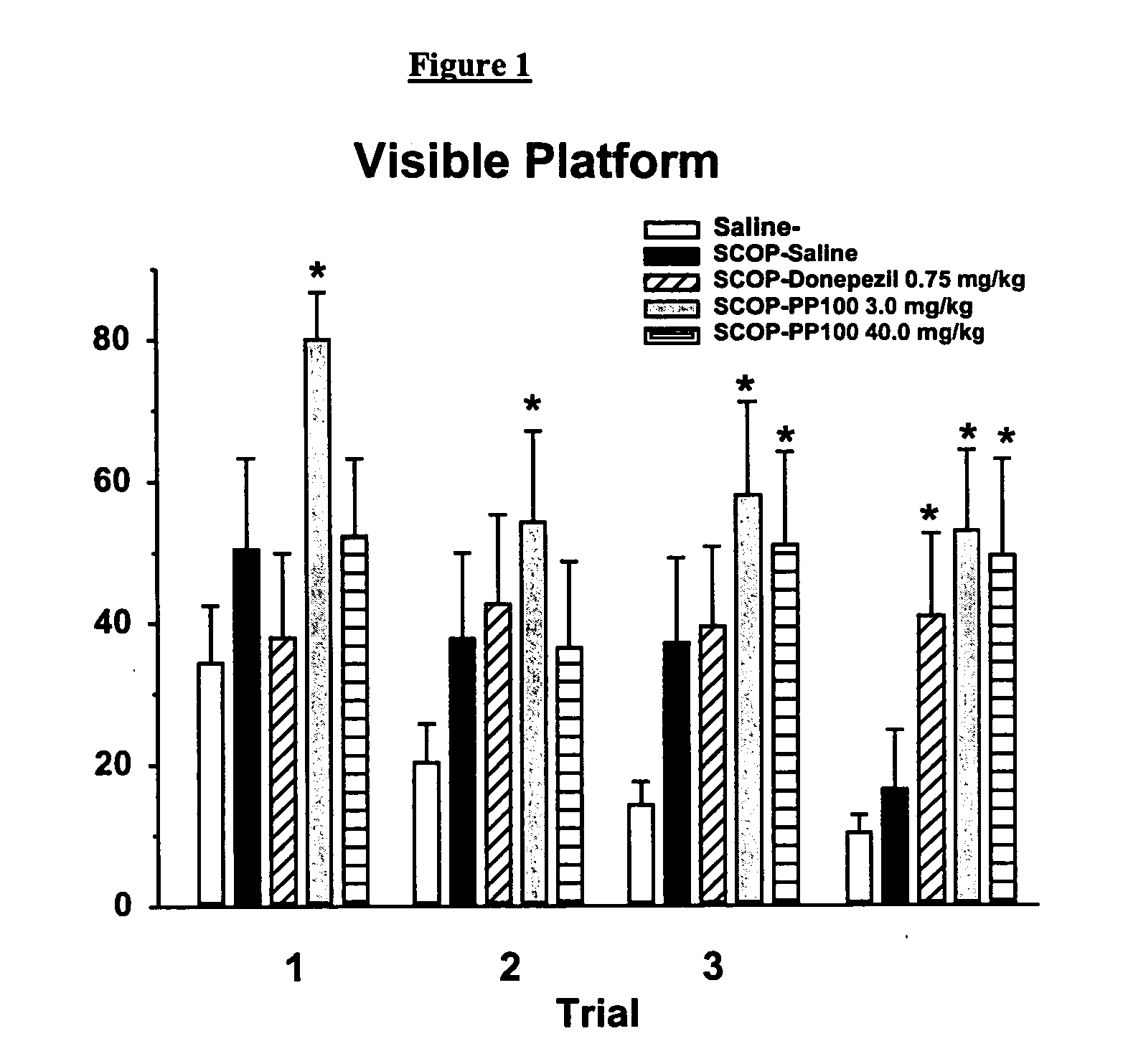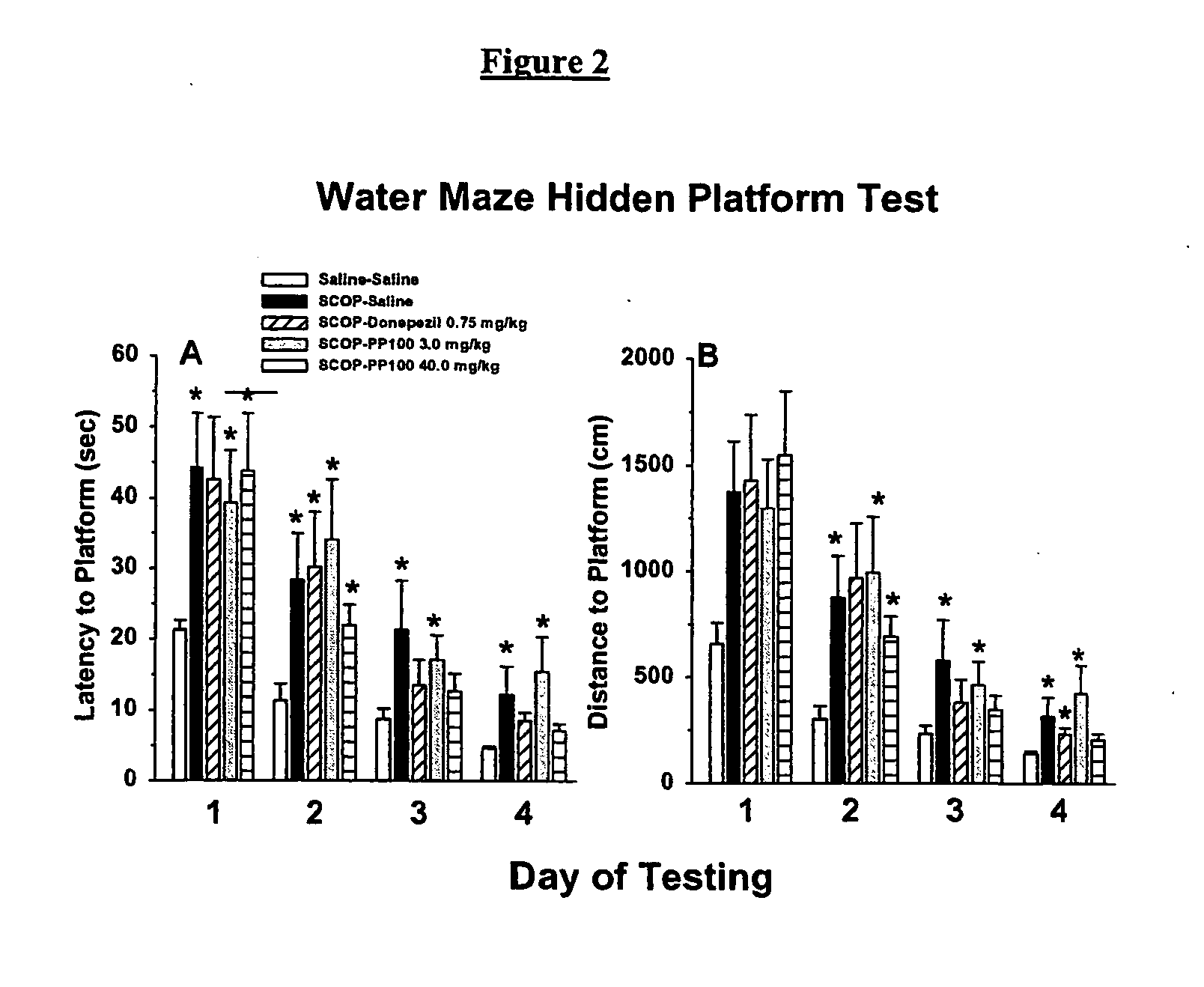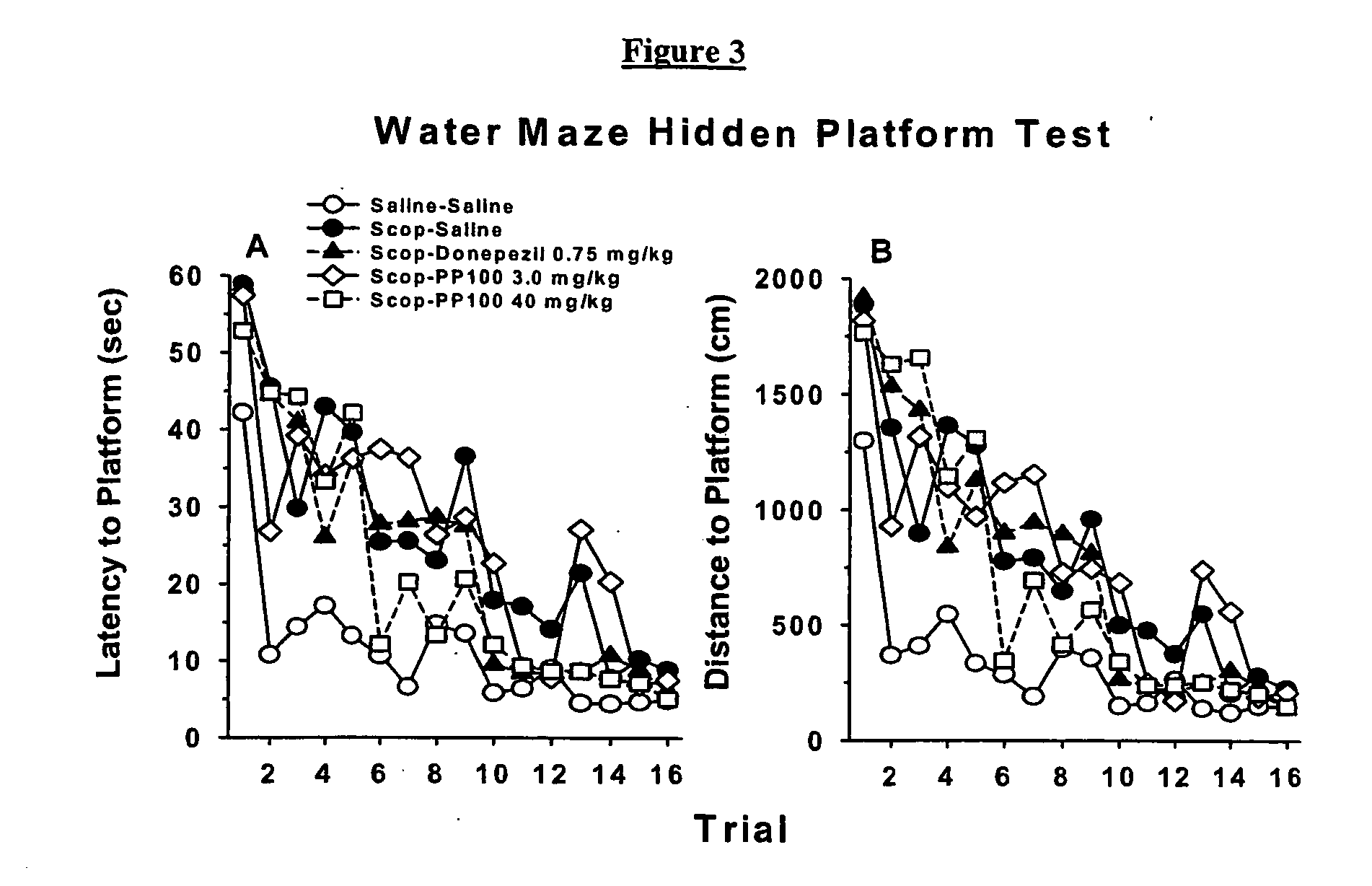Choline esters useful for the treatment of cognitive dysfunctions and enhancement of memory, learning and cognition
a cognitive dysfunction and choline esters technology, applied in the field of choline esters useful for the treatment of cognitive dysfunctions and the enhancement of memory, learning and cognition, can solve problems such as difficulty in learning, gradual loss of memory, and problems with reasoning or judgment, so as to improve learning and behavior, and improve learning and behavior
- Summary
- Abstract
- Description
- Claims
- Application Information
AI Technical Summary
Benefits of technology
Problems solved by technology
Method used
Image
Examples
example 1
[0217] The active ingredient can be prepared as a controlled release pharmaceutical composition, as described in U.S. Pat. No. 6,491,950; wherein the active ingredient as described herein (e.g., stearyl choline chloride) is substituted for the active ingredient described therein. The composition can include a matrix of a material that includes a high melting point fatty acid ester, an oil, a polymeric cellulose derivative, or a combination thereof. The active ingredient can optionally be associated with the matrix. The formulation can optionally include a surfactant (e.g., polysorbate 80).
[0218] Suitable high melting fatty acid esters include, e.g., glyceryl behenate, glyceryl palmitostearate, and glyceryl stearate. Suitable oils include, e.g., corn oil, cottonseed oil, menhaden oil, safflower oil, sesame oil, shark-liver oil, soybean oil, olive oil, and wheat germ oil. Suitable cellulosic polymers include, e.g., a low-substituted hydroxypropyl ether cellulose polymer and a cellulo...
example 2
[0220] The active ingredient can be prepared as a biphasic controlled release pharmaceutical composition, as described in U.S. Pat. No. 6,475,521; wherein the active ingredient as described herein (e.g., stearyl choline chloride) is substituted for the active ingredient described therein. Such a system can provide a dosage form that has prolonged gastric residence so that the active ingredient can be administered once daily to sustain a continuous plasma concentration of the active ingredient.
[0221] The controlled release pharmaceutical composition includes an inner solid particulate phase formed of substantially uniform granules containing the active ingredient, one or more hydrophilic polymers, and one or more hydrophobic polymers. The delivery system can also include one or more hydrophobic materials, such as one or more waxes, fatty alcohols and / or fatty acid esters. The controlled release pharmaceutical composition has an outer solid continuous phase in which the above granule...
example 3
[0224] The active ingredient can be prepared as a controlled release tablet form, having a hydrophilic matrix that is suitable for the once-a-day administration, as described in U.S. Pat. No. 6,419,953; wherein the active ingredient of the present invention (e.g., stearyl choline chloride) is substituted for the active ingredient described therein. The tablet can include from about 50 weight percent to about 55 weight percent of the active ingredient, from about 20 weight percent to about 40 weight percent hydroxypropyl methylcellulose, from about 5 weight percent to about 15 weight percent lactose, from about 4 weight percent to about 6 weight percent microcrystalline cellulose, and from about 1 weight percent to about 5 weight percent of silicon dioxide. All of the weight percentages are based upon the total weight of the tablet dosage form.
[0225] More specifically, the controlled release tablet can be formed from a uniform admixture of about 54 weight percent of the active ingre...
PUM
| Property | Measurement | Unit |
|---|---|---|
| time | aaaaa | aaaaa |
| solubility | aaaaa | aaaaa |
| viscosity | aaaaa | aaaaa |
Abstract
Description
Claims
Application Information
 Login to View More
Login to View More - R&D
- Intellectual Property
- Life Sciences
- Materials
- Tech Scout
- Unparalleled Data Quality
- Higher Quality Content
- 60% Fewer Hallucinations
Browse by: Latest US Patents, China's latest patents, Technical Efficacy Thesaurus, Application Domain, Technology Topic, Popular Technical Reports.
© 2025 PatSnap. All rights reserved.Legal|Privacy policy|Modern Slavery Act Transparency Statement|Sitemap|About US| Contact US: help@patsnap.com



